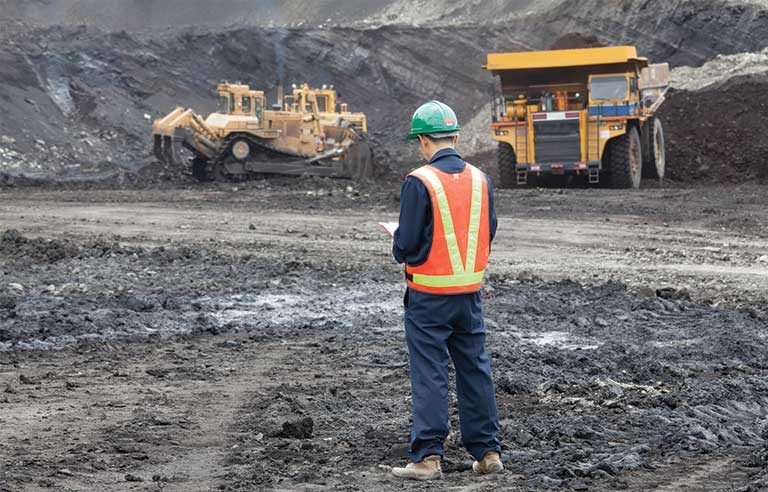For surface coal miners, the ‘big hazard’ is silica, NIOSH expert says

Washington — Surface coal miners, especially those who work in drilling, may be exposed to higher concentrations of respirable dust or quartz. This puts them at elevated risk of coal workers’ pneumoconiosis – a deadly but preventable disease known as black lung, results of a recent NIOSH study show.
To analyze coal dust exposure among surface mine workers, researchers used nearly 289,000 respirable dust samples collected by the Mine Safety and Health Administration from 1982 to 2017. Of these samples, 1.6% exceeded the agency’s permissible exposure limit of 2 milligrams of dust per cubic meter of air. Among the more than 54,000 respirable quartz samples collected, 15.3% surpassed the PEL. Quartz is the most common form of respirable crystalline silica.
“Although the percentage of samples that exceeded the MSHA permissible exposure limit dropped (from a high of 5% in 1984), the big hazard is the silica,” NIOSH industrial hygienist Brent Doney told Safety+Health. “The percent of silica in the samples that were analyzed for it did not drop throughout this time.”
Although the majority of studies on respirable dust exposure have focused on underground miners, the researchers noted that surface operations produced 500 million short tons of coal in 2017, while underground mines produced 271 million short tons. Further, surface mines outnumbered underground mines twofold and had 17,800 more workers.
Scott Laney, an NIOSH epidemiologist, said radiographic surveillance of surface mine workers did not become commonplace until 2014, when MSHA adjusted its regulatory language. In contrast, surveillance of underground miners began in 1969, when Congress passed the Coal Mine Health and Safety Act.
“We didn’t have a mechanism to formally do that like we do the underground miners,” Laney said.
The occupations in the industry with the greatest exposure to respirable quartz dust involved drilling. The mean percent quartz in drilling occupations samples analyzed was nearly double the average (13.2% quartz vs. 7.2%), with bulldozer operator (13.9), highwall drill helper (13.7), highwall drill operator (13.5) and blaster/shooter/shotfirer (11.1) samples showing the highest percentages of quartz.
Doney said worker protections for vulnerable occupations should include wet drilling, local exhaust ventilation systems, and pressurized cabs on vehicles and equipment to protect operators. Companies also should wet down haulage roads every four hours. “That makes a tremendous difference in the amount of respirable dust that’s in the air,” Doney said.
“From the disease side, we’re definitely going in the wrong direction,” Laney said. “All signs point to that. We’ve done a lot of research that’s shown that and we’re trying to get to the bottom of it.”
The study was published online Dec. 9 in the American Journal of Industrial Medicine.
Post a comment to this article
Safety+Health welcomes comments that promote respectful dialogue. Please stay on topic. Comments that contain personal attacks, profanity or abusive language – or those aggressively promoting products or services – will be removed. We reserve the right to determine which comments violate our comment policy. (Anonymous comments are welcome; merely skip the “name” field in the comment box. An email address is required but will not be included with your comment.)

